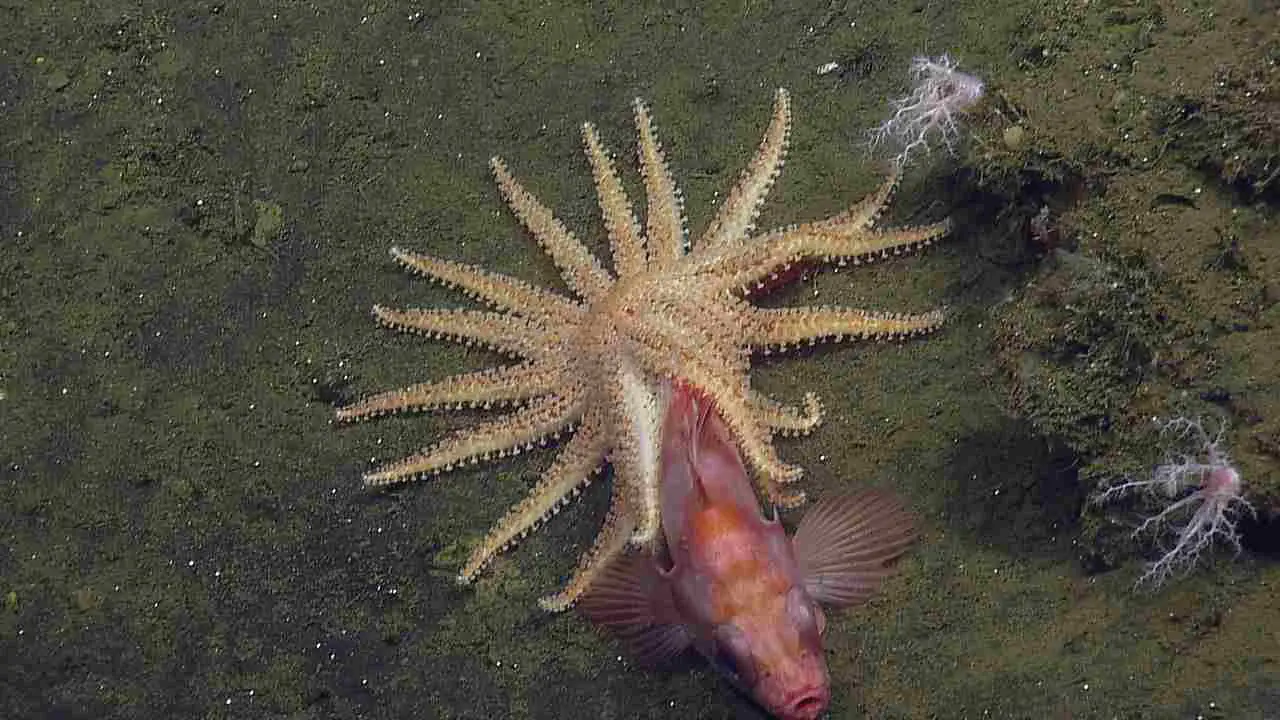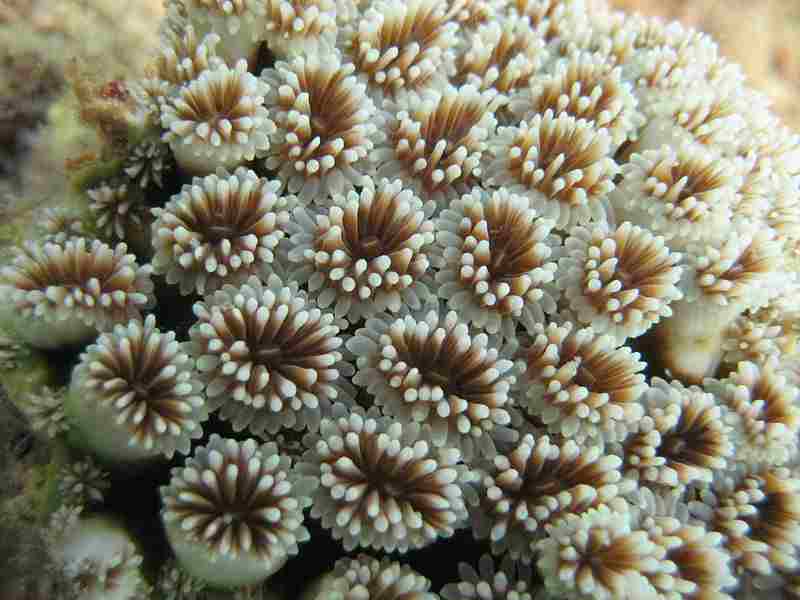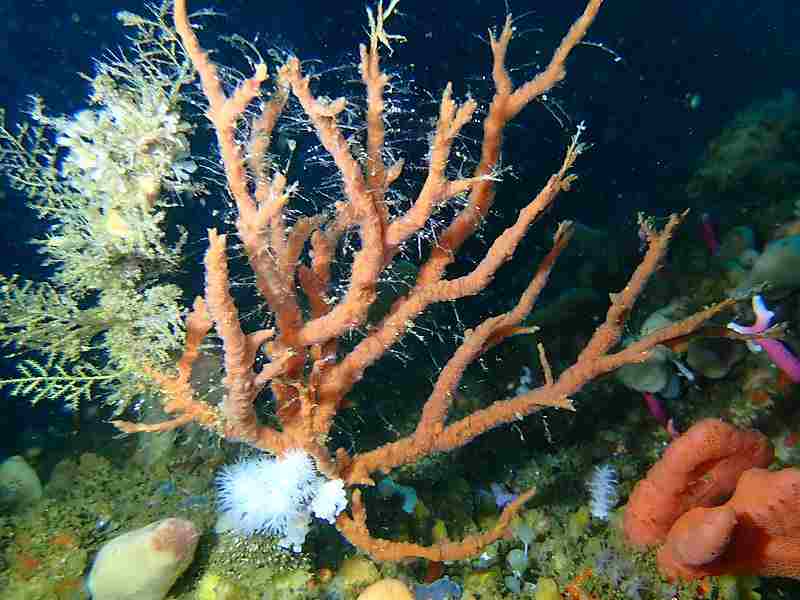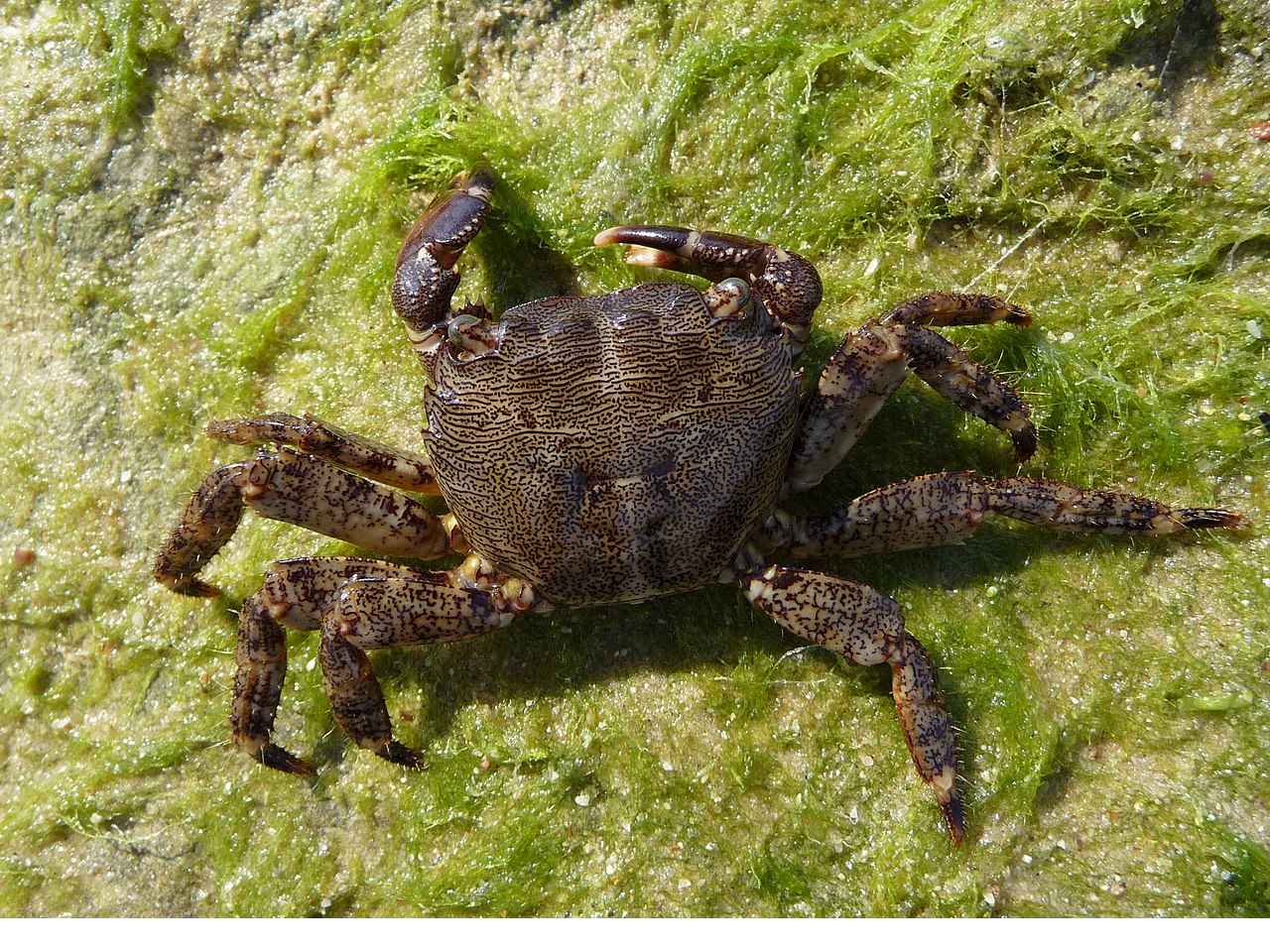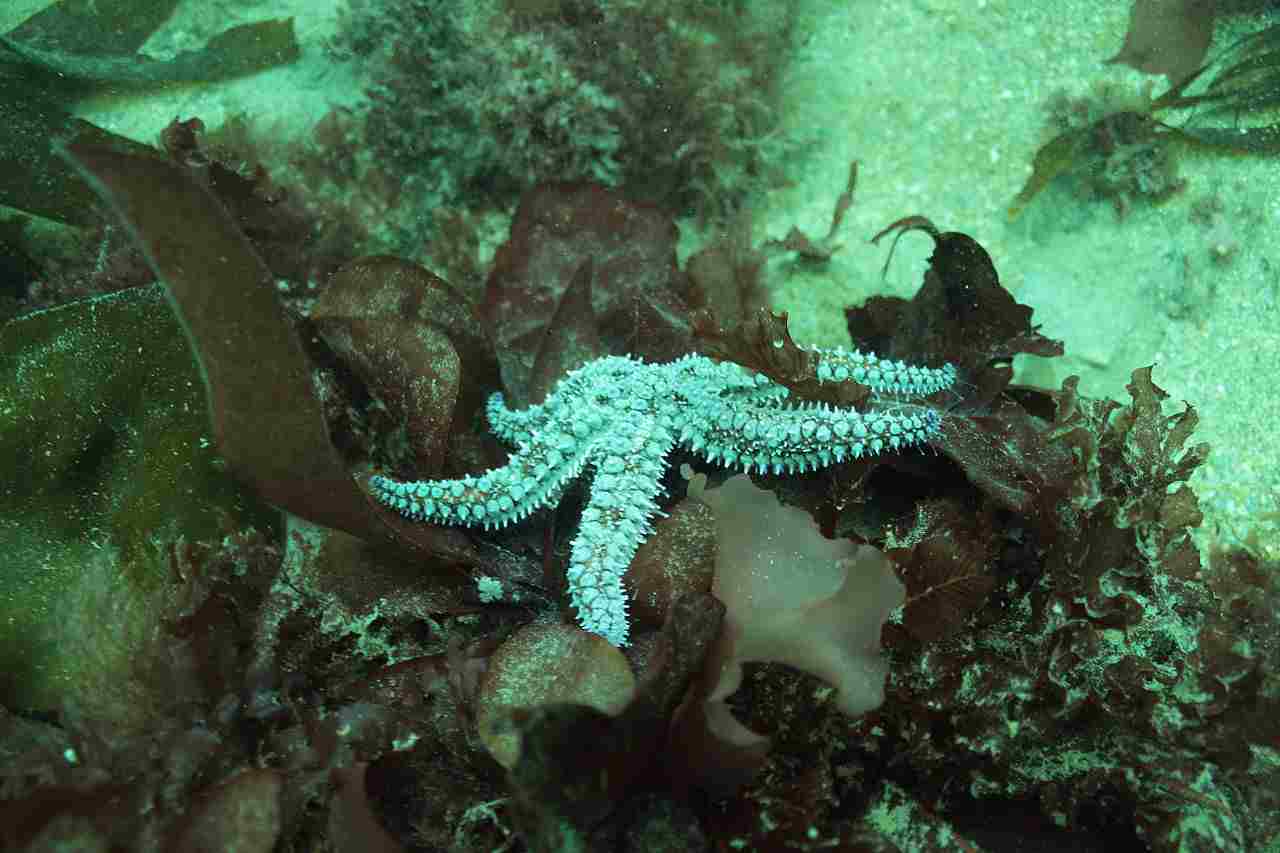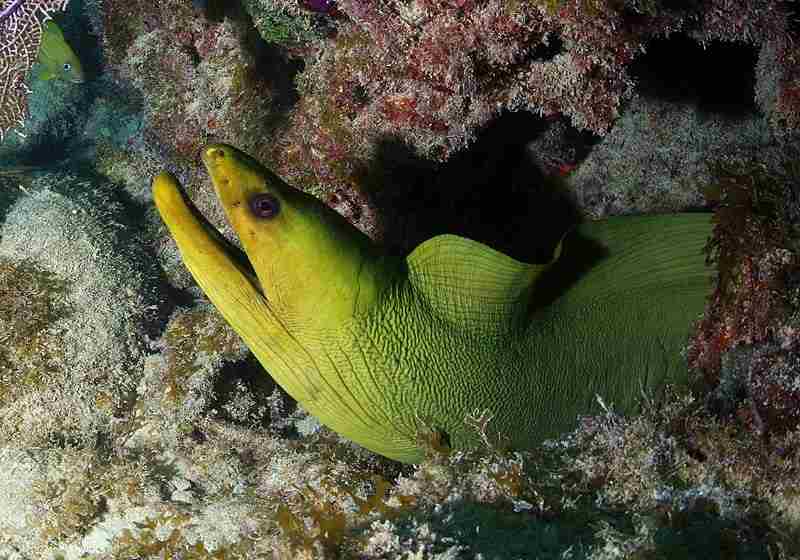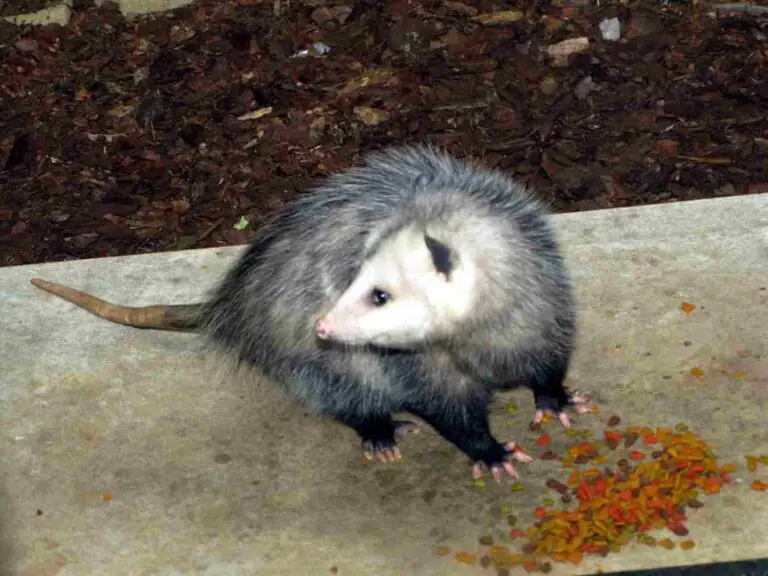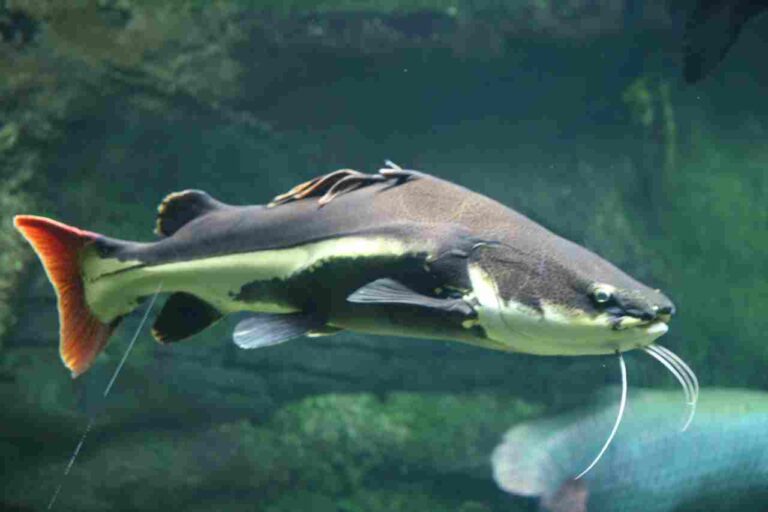17+ Detritivores In Coral Reefs And Their Characteristics
Examples of detritivores in coral reefs are hermit crabs, sea cucumbers, and bristle worms. These organisms play a vital role in breaking down organic matter and recycling nutrients, which helps maintain a healthy and balanced reef ecosystem. Other detritivores, such as shrimp and brittle stars, contribute to the structure and aeration of the substrate, supporting a diverse range of marine life. Through their detritivorous activities, these creatures help keep coral reefs clean and promote a vibrant and resilient ecosystem.
1. Hermit Crabs
Hermit crabs are a fascinating group of detritivores that play a crucial role in the coral reef ecosystem. These unique crustaceans are known for their habit of occupying empty shells to protect their soft abdomens, a behavior that sets them apart from other crabs. In a coral reef setting, hermit crabs scavenge for detritus, algae, and other organic matter, helping to keep the ecosystem clean and balanced. By consuming this decomposing material, they contribute to nutrient recycling, which is vital for maintaining a healthy reef environment. Hermit crabs are often found in rocky areas and tide pools, where they diligently search for food and suitable shells to inhabit.
In addition to their scavenging role, hermit crabs also contribute to the reef’s biodiversity and structure. As they move about the reef, they help aerate the substrate, which can promote the growth of other organisms. Furthermore, their need for shells creates a connection between hermit crabs and other mollusks, as the crabs rely on discarded shells from snails and other creatures. This relationship adds a dynamic aspect to the reef’s ecosystem, demonstrating the interconnectedness of its inhabitants. Overall, hermit crabs are essential for maintaining the health and resilience of coral reefs through their detritivorous activities and their interactions with other marine life.
2. Sea Cucumbers
Sea cucumbers are elongated, soft-bodied echinoderms that play a crucial role as detritivores in the coral reef ecosystem. These creatures crawl slowly along the ocean floor, ingesting sediment and organic matter, which they process through their long digestive tracts. This feeding behavior helps to recycle nutrients and maintain the cleanliness of the reef environment. Sea cucumbers are particularly effective in breaking down detritus, facilitating the decomposition process, and returning nutrients to the ecosystem, which in turn supports the growth of algae and other marine organisms.
In addition to their role in nutrient recycling, sea cucumbers contribute to the physical structure of coral reefs. As they process sediment, they often help aerate and mix the substrate, promoting the health of other benthic organisms. Some species of sea cucumbers also secrete mucus that can bind sand particles together, providing stability to the reef structure. This dual role in both nutrient cycling and substrate modification underscores the importance of sea cucumbers in sustaining a vibrant and resilient coral reef ecosystem.
3. Bristle Worms
Bristle worms, members of the polychaete family, are segmented worms found in a variety of marine environments, including coral reefs. They are known for their bristly appendages and for playing a significant role as detritivores within these ecosystems. Bristle worms scavenge for organic matter, consuming decaying plant material, animal remains, and other detritus. By doing so, they help decompose this material and contribute to nutrient cycling, which is critical for supporting the growth and health of coral reef organisms.
Apart from their role in nutrient cycling, bristle worms are also a vital food source for other reef-dwelling animals. Fish, sea stars, and other predators rely on bristle worms as a significant component of their diet. This predatory relationship adds to the complex food web that exists within coral reefs, illustrating the interconnectedness of the ecosystem. Bristle worms’ burrowing behavior also helps aerate the substrate, which promotes a healthier environment for other benthic organisms. Overall, these worms are indispensable for maintaining the ecological balance within coral reefs.
4. Shrimp (e.g., Cleaner Shrimp)
Shrimp, especially cleaner shrimp, play a unique role in coral reef ecosystems as detritivores and symbionts. Cleaner shrimp are renowned for their behavior of removing parasites and dead tissue from other marine animals, including fish. This cleaning activity not only benefits the host species by promoting health and reducing the risk of infection but also provides the shrimp with a steady source of food. In this way, cleaner shrimp contribute to the cleanliness and balance of the reef ecosystem.
Besides their role as cleaners, shrimp in general also scavenge for organic debris and detritus, helping to break down decomposing matter. This scavenging contributes to the recycling of nutrients in the reef, aiding the growth of various marine organisms. Shrimp also serve as a food source for many reef predators, such as fish and octopuses, which reinforces their importance in the reef’s food web. Thus, shrimp are vital for maintaining a healthy coral reef ecosystem through their cleaning services and detritivorous activities.
5. Brittle Stars
Brittle stars are a type of echinoderm closely related to sea stars, characterized by their long, slender arms. They are crucial detritivores in coral reef ecosystems, feeding on decaying organic matter and plankton. Brittle stars play an important role in nutrient cycling by consuming detritus and returning nutrients to the reef. They are often found hiding under rocks or within crevices during the day, emerging at night to forage, which helps maintain the balance of organic matter within the reef environment.
The activity of brittle stars also contributes to the structural integrity of coral reefs. As they move through the substrate, they help aerate and mix it, promoting a healthier environment for other benthic organisms. Brittle stars also serve as prey for various reef predators, like fish and crabs, adding another layer to the complex food web in coral reef ecosystems. By fulfilling these roles, brittle stars are key contributors to the overall health and resilience of coral reefs.
6. Feather Duster Worms
Feather duster worms, a type of polychaete, are known for their striking, feathery crowns used for feeding and respiration. These worms play an important role in coral reef ecosystems by filtering plankton and organic particles from the water. As detritivores, they help maintain water quality by removing suspended matter, which contributes to a cleaner reef environment. Feather duster worms often attach to rocks or coral and use their feathery appendages to catch food, making them a unique and visible component of the reef’s benthos.
In addition to their filtering role, feather duster worms contribute to the structural complexity of coral reefs. Their tube-like structures can provide habitats for smaller organisms, adding to the overall biodiversity of the reef. By feeding on suspended particles, feather duster worms also play a role in nutrient cycling, supporting the growth and health of other reef inhabitants. These factors underscore the importance of feather duster worms in maintaining a vibrant and balanced coral reef ecosystem.
7. Copepods
Copepods are tiny crustaceans that play a vital role in coral reef ecosystems as detritivores and a major component of plankton. They feed on microscopic algae, detritus, and other organic particles, thus contributing to nutrient cycling and maintaining water quality. Copepods are a crucial part of the food web, serving as prey for many reef organisms, including fish, corals, and other filter feeders. Their abundance and wide distribution make them a fundamental part of the coral reef ecosystem.
Besides their role in nutrient cycling and the food web, copepods also contribute to the health of corals. Some copepod species are known to form symbiotic relationships with corals, providing them with nutrients and cleaning services. These relationships help promote coral growth and resilience, essential for maintaining the reef’s structure. Copepods’ dual role as detritivores and prey underscores their importance in supporting a healthy and thriving coral reef ecosystem.
8. Amphipods
Amphipods are small, shrimp-like crustaceans that play a critical role as detritivores in coral reef ecosystems. These agile creatures feed on detritus, decomposing plant material, and organic debris, helping to recycle nutrients and keep the reef environment clean. Amphipods are often found in large numbers, foraging among coral and rocky substrates, contributing to the breakdown of organic matter and aiding nutrient cycling. Their scavenging activities are crucial for maintaining a balanced coral reef ecosystem.
In addition to their role as detritivores, amphipods are an essential food source for various reef predators, including fish and invertebrates. This makes them a vital link in the coral reef food web, connecting primary producers and detritus with higher trophic levels. Amphipods’ presence and abundance also indicate a healthy reef ecosystem, as they are sensitive to changes in water quality and habitat conditions. Overall, amphipods contribute to the ecological balance and resilience of coral reefs through their detritivorous activities and position within the food web.
9. Isopods
Isopods are another group of crustaceans that are integral to the detritivorous community in coral reef ecosystems. These flattened, segmented creatures consume a variety of organic matter, including dead plant material, algae, and decaying animal remains. By feeding on these materials, isopods play a key role in nutrient cycling and contribute to the decomposition process within the reef. Isopods are found in a range of reef habitats, from shallow tide pools to deeper coral formations, and their scavenging activities help maintain the cleanliness and health of the reef environment.
Isopods also contribute to the coral reef food web by serving as a food source for many predators, such as fish and crustaceans. This role in the food web underscores their importance in supporting the diverse and complex relationships within coral reef ecosystems. Isopods’ burrowing behavior can also help aerate and mix the substrate, promoting a more stable and healthy environment for other benthic organisms. As key detritivores and prey, isopods are essential to maintaining the ecological balance and resilience of coral reefs.
10. Snails (e.g., Nassarius Snails)
Nassarius snails are a type of marine snail known for their role as detritivores in coral reef ecosystems. These snails are scavengers, feeding on decomposing organic matter and animal remains, which helps keep the reef clean and reduces the buildup of detritus. Their feeding behavior contributes to nutrient cycling by breaking down organic material and returning nutrients to the ecosystem. Nassarius snails are often found in sandy substrates, where they bury themselves and emerge to feed, playing a crucial role in maintaining the balance of organic matter within the reef.
In addition to their detritivorous activities, Nassarius snails contribute to the structural integrity of coral reefs. By burrowing and moving through sandy substrates, they help aerate the substrate, promoting a healthier environment for other benthic organisms. These snails are also a food source for various reef predators, such as fish and crabs, reinforcing their importance in the reef’s food web. Overall, Nassarius snails play a significant role in maintaining the cleanliness and ecological balance of coral reefs through their scavenging and substrate-aerating activities.
11. Crinoids (Sea Lilies)
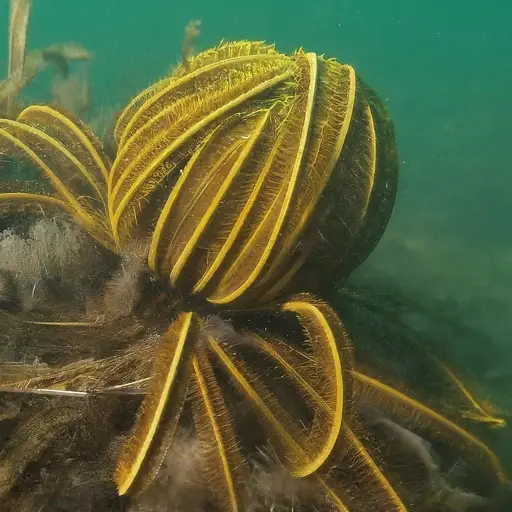
Crinoids, also known as sea lilies, are echinoderms that play an essential role as filter feeders in coral reef ecosystems. These graceful creatures have long, feathery arms that they use to capture plankton and organic particles from the water column. By filtering out these suspended particles, crinoids contribute to water quality and help maintain the ecological balance within coral reefs. Their filter-feeding behavior aids in nutrient cycling, providing a steady source of food for themselves while supporting the broader reef community.
In addition to their role in filtering and nutrient cycling, crinoids also contribute to the biodiversity and structure of coral reefs. They often form large colonies, creating habitats for other reef organisms, such as small fish and invertebrates. This additional structure enhances the complexity of the reef, fostering a diverse and thriving ecosystem. Crinoids’ presence in coral reefs adds beauty and functionality, illustrating the interconnectedness of filter feeders and other reef inhabitants.
12. Clams (e.g., Giant Clams)
Giant clams are among the most recognizable bivalves in coral reef ecosystems, known for their massive size and vibrant colors. These clams play a dual role as detritivores and filter feeders, helping to maintain water quality and nutrient cycling within the reef. By filtering large volumes of water, giant clams remove plankton and organic particles, contributing to a cleaner environment. This filtration process not only benefits the clams but also supports the growth and health of other reef organisms by reducing the amount of suspended matter in the water.
Beyond their role in filtering, giant clams have a unique symbiotic relationship with photosynthetic algae called zooxanthellae. The clams provide a stable habitat for these algae, which, in return, produce nutrients through photosynthesis, supporting the clam’s growth and reproduction. This relationship contributes to the broader nutrient cycling within the reef ecosystem, illustrating the interconnected nature of coral reefs. Giant clams also serve as habitats for smaller organisms and are a source of food for various predators, reinforcing their importance in the coral reef food web and structure.
13. Tunicates
Tunicates, also known as sea squirts, are marine invertebrates that play a significant role as detritivores in coral reef ecosystems. They feed by filtering water, trapping plankton, and organic particles, which helps maintain the water quality and aids in nutrient cycling. Tunicates often form colonies on hard surfaces, such as coral and rocks, and their feeding activity reduces the amount of detritus in the reef. This filtering behavior is crucial for the balance of organic matter and supports a cleaner reef environment.
In addition to their detritivorous role, tunicates contribute to the biodiversity of coral reefs. Their colonies can provide habitats for smaller marine organisms, adding complexity to the reef structure. Some tunicates also form symbiotic relationships with other reef organisms, further illustrating the interconnectedness within coral ecosystems. As important filter feeders, tunicates are integral to the health and resilience of coral reefs.
14. Sea Stars (e.g., Cushion Stars)
Sea stars, such as cushion stars, are a group of echinoderms that play a role as detritivores in coral reef ecosystems. These creatures scavenge for dead organic matter, including plant debris and dead animals, helping to break down these materials and contribute to nutrient cycling. Cushion stars are typically found in various reef environments, from shallow tide pools to deeper coral formations, where they forage for food, aiding in the decomposition process.
In addition to their role in nutrient recycling, sea stars also serve as predators and are part of the reef’s food web. They are known to prey on smaller invertebrates and contribute to controlling their populations. This predatory behavior, along with their detritivorous activities, helps maintain the ecological balance within coral reefs. Sea stars are a significant component of coral reef ecosystems, providing multiple functions that support a healthy and resilient environment.
15. Sand Dollars
Sand dollars are flat, burrowing echinoderms that play an important role as detritivores in coral reef ecosystems. They feed on organic debris and microscopic particles found in sandy substrates, helping to break down organic matter and recycle nutrients within the reef environment. Sand dollars typically inhabit sandy or muddy areas, where they contribute to the decomposition process and maintain the cleanliness of the substrate.
In addition to their role as detritivores, sand dollars contribute to the reef’s structural stability. Their burrowing behavior helps aerate and mix the substrate, promoting a healthier environment for other benthic organisms. Sand dollars are also a food source for various reef predators, such as fish and crabs, reinforcing their position in the coral reef food web. As key detritivores and substrate stabilizers, sand dollars are integral to maintaining a healthy coral reef ecosystem.
16. Barnacles
Barnacles are small crustaceans that play a critical role as detritivores and filter feeders in coral reef ecosystems. They attach themselves to hard surfaces, such as rocks and coral, and feed by filtering plankton and organic particles from the water. This feeding behavior helps reduce the amount of suspended matter, contributing to water quality and nutrient cycling. Barnacles’ filtering activities are vital for maintaining a cleaner reef environment and supporting other reef organisms.
In addition to their filtering role, barnacles contribute to the reef’s structural complexity. Their hard calcareous shells create additional surfaces for other organisms to attach to and can provide habitats for smaller marine creatures. Barnacles are also an important food source for various reef predators, including fish and crabs, reinforcing their position in the coral reef food web. Through their filtering and structural contributions, barnacles are essential to the health and resilience of coral reefs.
17. Filter-Feeding Sponges
Filter-feeding sponges are a crucial group of detritivores in coral reef ecosystems. They play a significant role in maintaining water quality by filtering large volumes of water to capture plankton and organic particles. This filtering behavior helps reduce suspended matter, contributing to a cleaner reef environment and aiding nutrient cycling. Sponges are often found attached to rocks and coral, where they act as natural filters, supporting a balanced and healthy coral reef ecosystem.
Apart from their filtering role, sponges also contribute to the structural complexity of coral reefs. Their intricate shapes and structures create habitats for other reef organisms, enhancing the biodiversity and resilience of the ecosystem. Sponges can also form symbiotic relationships with other marine life, further illustrating the interconnectedness of coral reefs. By providing filtering services and structural habitats, filter-feeding sponges are indispensable to the overall health and stability of coral reefs.
18. Porcelain Crabs
Porcelain crabs are small crustaceans that play a vital role as filter feeders and detritivores in coral reef ecosystems. They feed by capturing plankton and organic particles from the water, contributing to nutrient cycling and maintaining water quality. Porcelain crabs use their feather-like appendages to filter food from the water, a behavior that helps reduce the amount of suspended matter in the reef environment. This filtering activity is essential for keeping the reef clean and supporting a diverse range of reef organisms.
In addition to their filtering role, porcelain crabs contribute to the reef’s structural complexity by providing habitats for other marine organisms. They often hide in crevices and among coral branches, creating small ecosystems within the reef. Porcelain crabs also serve as prey for various reef predators, including fish and octopuses, reinforcing their role in the coral reef food web. Through their detritivorous activities and contributions to the reef structure, porcelain crabs are key components of a healthy coral reef ecosystem.
*Summary
-
Hermit crabs scavenge for detritus and contribute to nutrient cycling and reef biodiversity.
-
Sea cucumbers break down organic matter and aid in substrate aeration.
-
Bristle worms contribute to nutrient cycling and serve as prey for other reef predators.
-
Cleaner shrimp clean other marine animals and scavenge for organic debris.
-
Brittle stars consume detritus and help aerate the substrate.
-
Feather duster worms filter plankton and provide habitats for smaller reef organisms.
-
Copepods are essential for nutrient cycling and serve as a primary food source for other reef creatures.
-
Amphipods feed on detritus and serve as prey for various reef predators.
-
Isopods contribute to nutrient cycling and aerate the substrate through their burrowing activities.
-
Nassarius snails scavenge organic matter and help aerate the substrate.
-
Crinoids filter plankton and contribute to the structural complexity of coral reefs.
-
Giant clams filter large volumes of water and have a symbiotic relationship with zooxanthellae.
-
Tunicates filter organic particles and contribute to the biodiversity of coral reefs.
-
Cushion stars consume dead organic matter and control smaller invertebrate populations.
-
Sand dollars burrow and help stabilize the substrate while feeding on organic debris.
-
Barnacles filter organic particles and provide additional habitat for other reef organisms.
-
Filter-feeding sponges contribute to nutrient cycling and provide structural habitats.
-
Porcelain crabs filter plankton and contribute to the coral reef food web.
| Detritivore | Key Role |
| Hermit crabs |
Scavenge detritus, nutrient cycling, reef biodiversity
|
| Sea cucumbers |
Break down organic matter, aerate substrate
|
| Bristle worms |
Nutrient cycling, prey for reef predators
|
| Cleaner shrimp |
Clean marine animals, scavenge organic debris
|
| Brittle stars |
Consume detritus, aerate substrate
|
| Feather duster worms |
Filter plankton, provide habitats
|
| Copepods |
Nutrient cycling, primary food source
|
| Amphipods |
Feed on detritus, prey for reef predators
|
| Isopods |
Nutrient cycling, aerate substrate
|
| Nassarius snails |
Scavenge organic matter, aerate substrate
|
| Crinoids |
Filter plankton, provide structural complexity
|
| Giant clams |
Filter water, symbiotic with zooxanthellae
|
| Tunicates |
Filter organic particles, contribute to biodiversity
|
| Cushion stars |
Consume organic matter, control smaller invertebrates
|
| Sand dollars |
Burrow, stabilize substrate, feed on organic debris
|
| Barnacles |
Filter organic particles, provide habitat
|
| Filter-feeding sponges |
Contribute to nutrient cycling, provide habitats
|
| Porcelain crabs |
Filter plankton, contribute to coral reef food web
|
